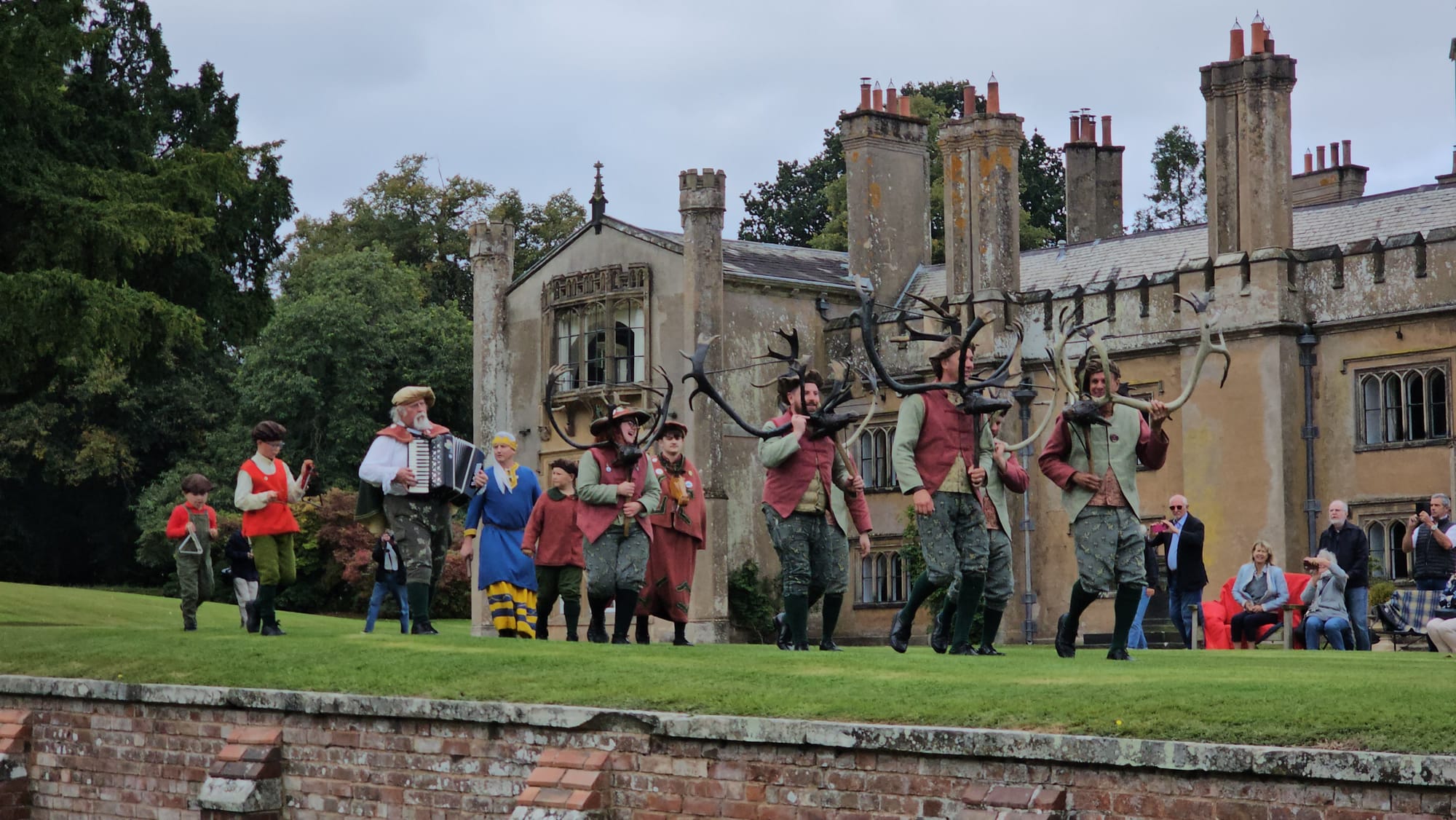The Abbots Bromley Horn Dance is one of the oldest and most intriguing folk customs in Britain, and its unique combination of ancient symbolism, rural traditions, and local pride makes it a fascinating subject of study. This dance, performed annually in the small Staffordshire village of Abbots Bromley, has endured for over 800 years, and its continued survival speaks to the importance of community and the preservation of heritage. Though the dance’s precise origins are shrouded in mystery, the Abbots Bromley Horn Dance offers an extraordinary glimpse into England’s medieval past and its links to more ancient, perhaps even pre-Christian, customs.
Watch my video on the Abbots Bromley Horn Dance on YouTube
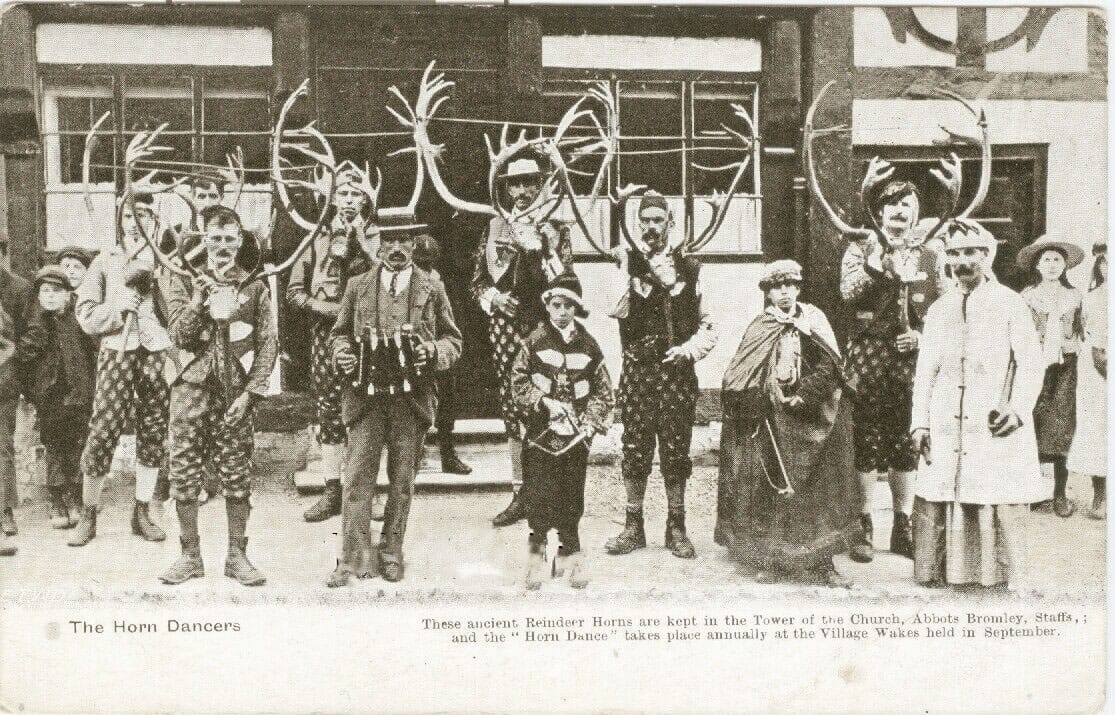
Origins of the Abbots Bromley Horn Dance
The first mention of the Abbots Bromley Horn Dance dates back to 1226 when it was performed at the St Bartholomew’s Fair, but the dance likely existed long before this date. The key feature of the dance is the use of six sets of reindeer antlers, carried by the performers. These antlers, carbon-dated to approximately 1065 AD, are thought to have come from reindeer in Scotland, a species that became extinct in the region between 1000 and 1200 AD. Some historians believe that the antlers may have been brought to England by Viking settlers, who had a strong cultural connection with horns and antlers, which they used in ceremonial practices.
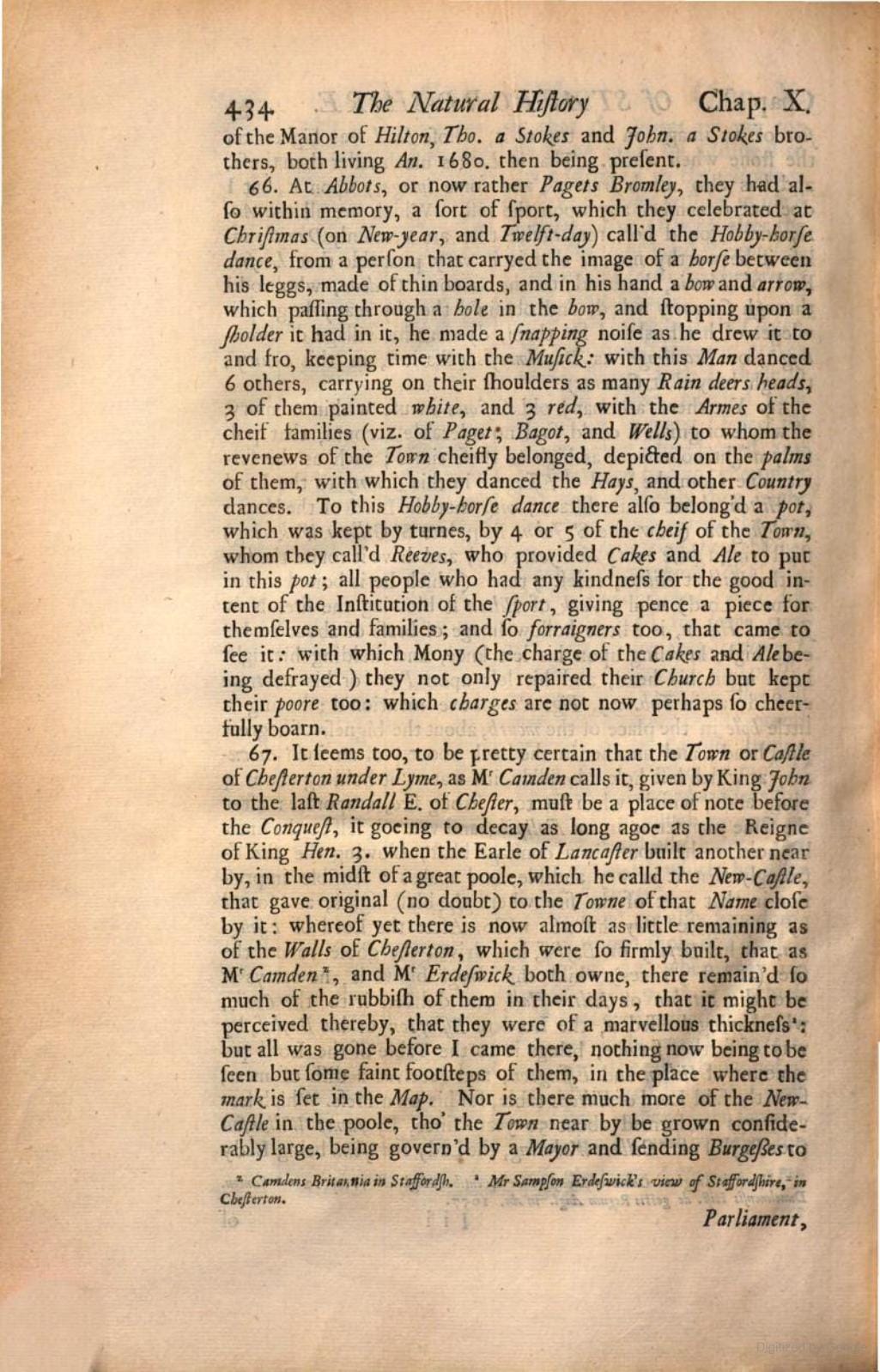
The earliest written reference to the Horn Dance appears in Robert Plot’s Natural History of Staffordshire, published in 1686. Plot describes the dance as having been performed before the English Civil War (1642–1651), which suggests that the tradition had been well-established by the 17th century. However, earlier accounts, such as a reference to a hobby horse performance in Abbots Bromley in 1532, indicate that the custom was already ancient by then.
The connection between the dance and the reindeer antlers has been the subject of much speculation. Some scholars suggest that the dance may have originated as a pagan fertility ritual, given the strong symbolism of antlers, which represent strength, vitality, and regeneration. Others have proposed that the dance was a medieval celebration of hunting rights, possibly dating back to the reign of King Henry I (1100–1135), when villagers may have been granted permission to hunt in the nearby forests.
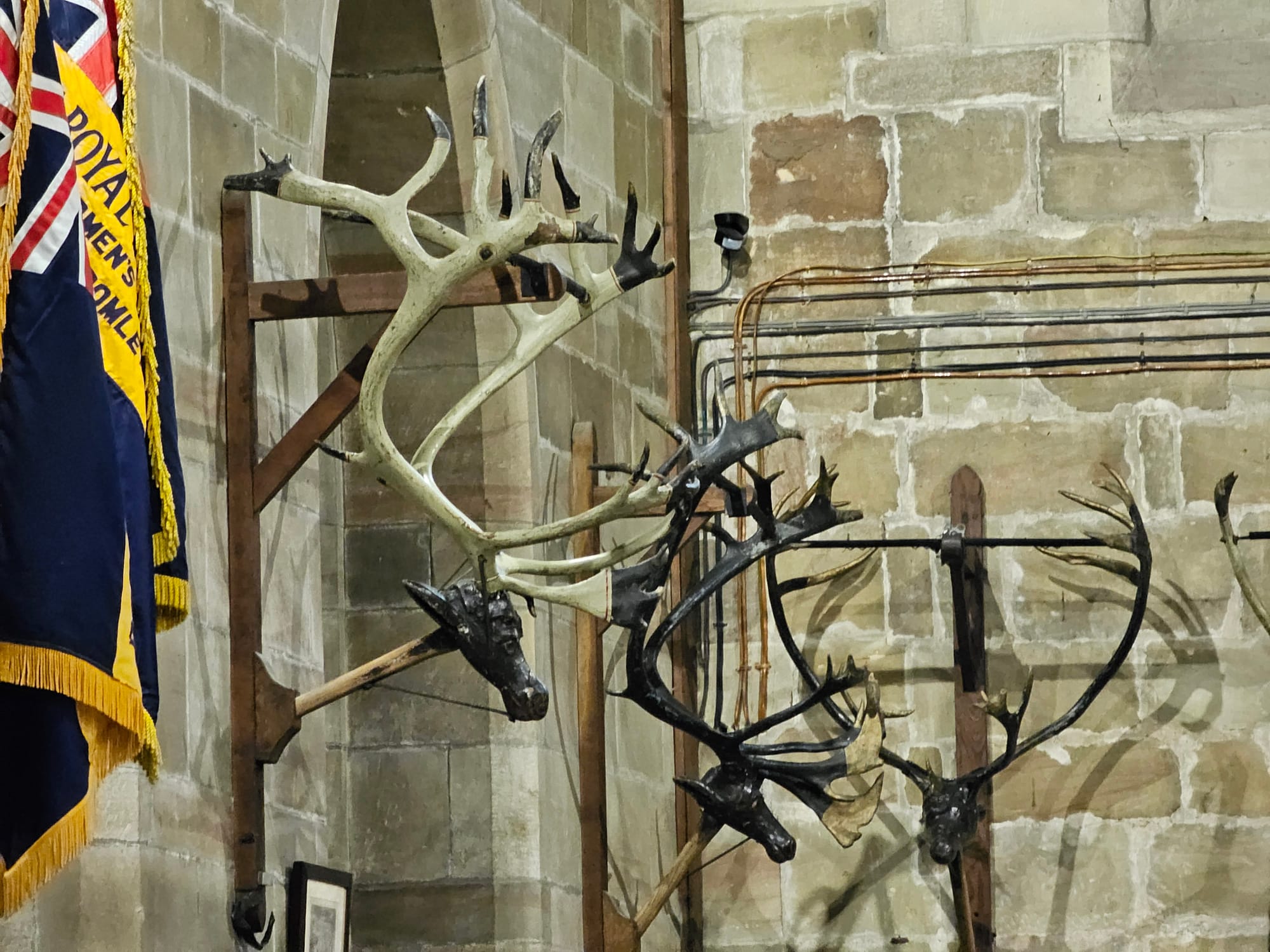
The Role of St Nicholas’ Church and the English Civil War
Like many traditional folk customs, the Abbots Bromley Horn Dance has survived through the centuries largely due to the close relationship between the community and the church. The reindeer antlers, which are central to the dance, are kept year-round at St Nicholas’ Church in Abbots Bromley. It is here, early on the morning of Wakes Monday (the first Monday after the first Sunday following 4 September), that the dancers begin their day. At 7:30 a.m., the dancers receive a blessing from the local vicar before retrieving the antlers from the church and embarking on their day-long, 10 mile tour of the village and surrounding countryside.
The dance’s continuity was threatened during the English Civil War, a period of intense political and religious upheaval. To protect the ancient antlers from being lost or destroyed, they were hidden in St Nicholas’ Church, where they remained until 1703, when they were brought out once more. According to local superstition, the antlers must never leave the village of Abbots Bromley, and this tradition has been upheld for centuries. A different set of antlers, acquired in the 1950s, is used for performances outside the village.
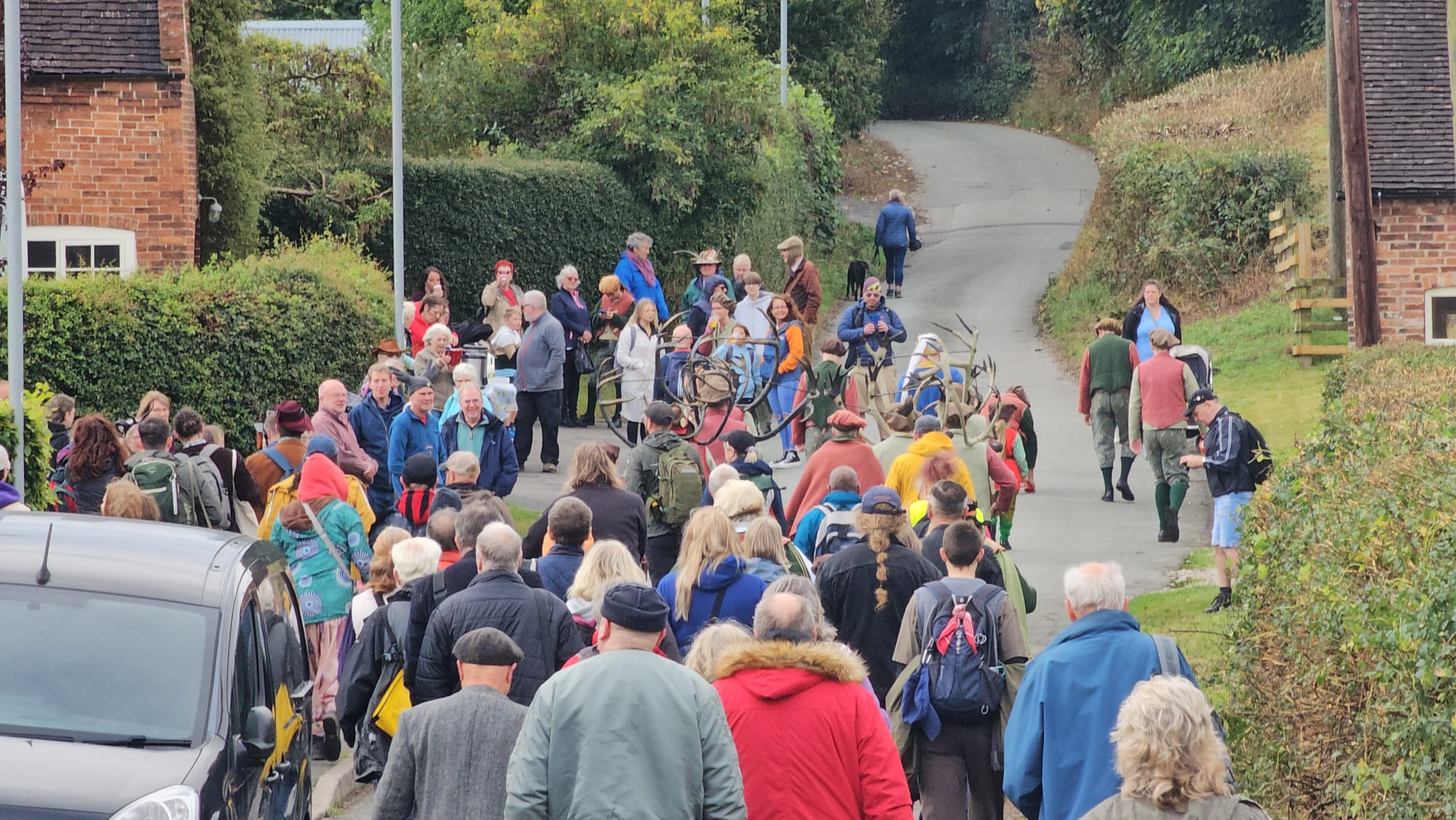
The Dance’s Route: A Ten-Mile Journey Through Tradition
The route of the Abbots Bromley Horn Dance is an essential part of the tradition. After their blessing at the church, the dancers set off at 8 a.m. on a ten-mile circuit through the village and its surrounding areas. They make twelve stops along the way, performing the dance at farms, houses, and other notable locations. The most important of these stops is Blithfield Hall, the ancestral home of the Bagot family.
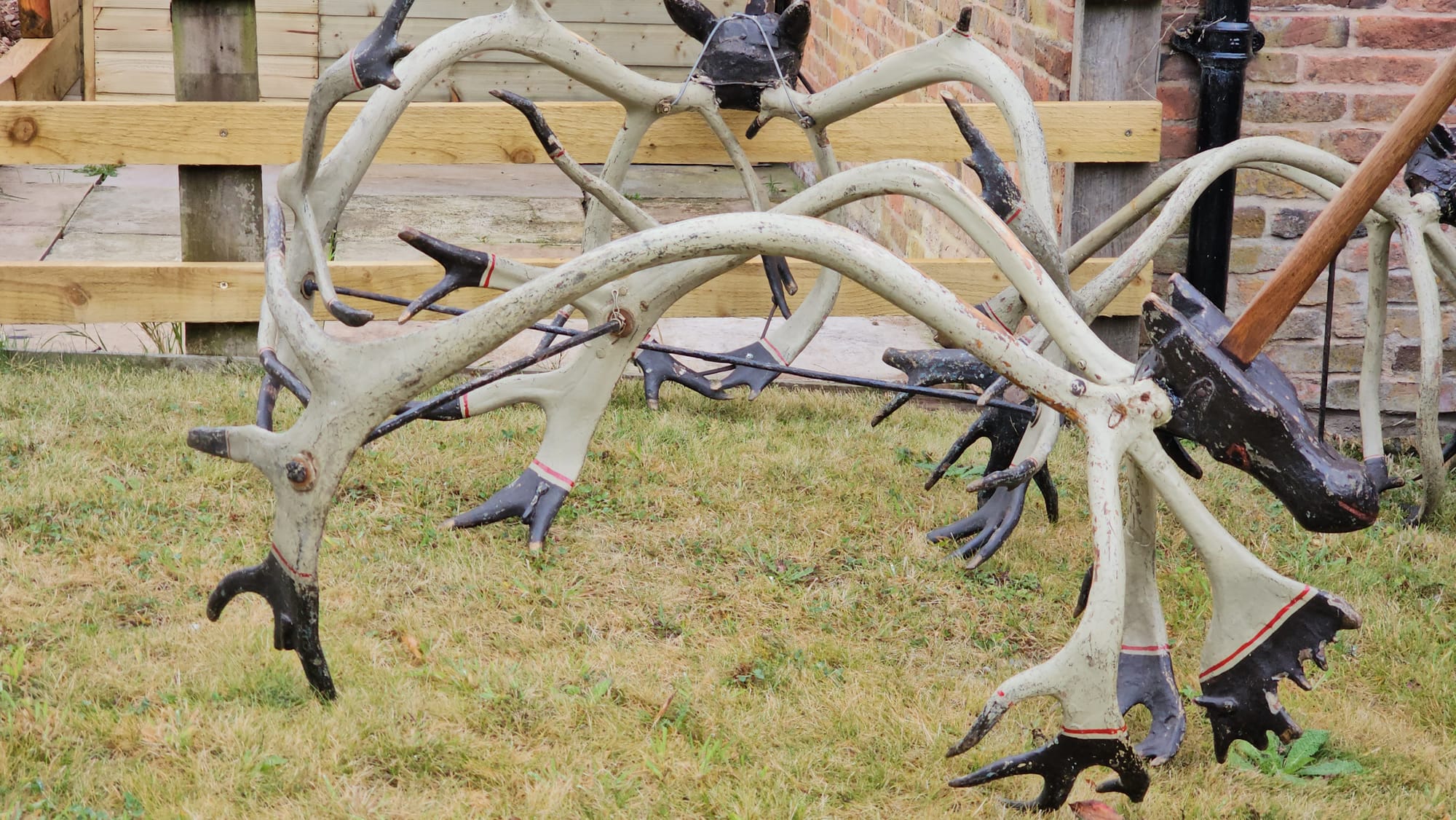
The journey is physically demanding, as the dancers must carry the heavy reindeer antlers throughout the day. The largest pair of antlers weigh over 25 pounds (11 kg) and spans more than 40 inches (101 cm) across. The antlers are mounted on wooden deer heads attached to poles, making them cumbersome to carry over such a long distance. Nevertheless, the dancers continue their route with dedication, stopping at various points to perform the dance before moving on to the next location.
The village of Abbots Bromley itself becomes a hub of activity on Wakes Monday, with stalls selling local crafts, exhibitions, and food stands adding to the festive atmosphere. Visitors from across the country, and indeed from around the world, come to witness this extraordinary tradition, and the village’s pubs remain open all day to welcome participants and spectators alike. The dancers return to St Nicholas’ Church around 8 p.m., where the reindeer antlers are safely returned to their resting place for another year.
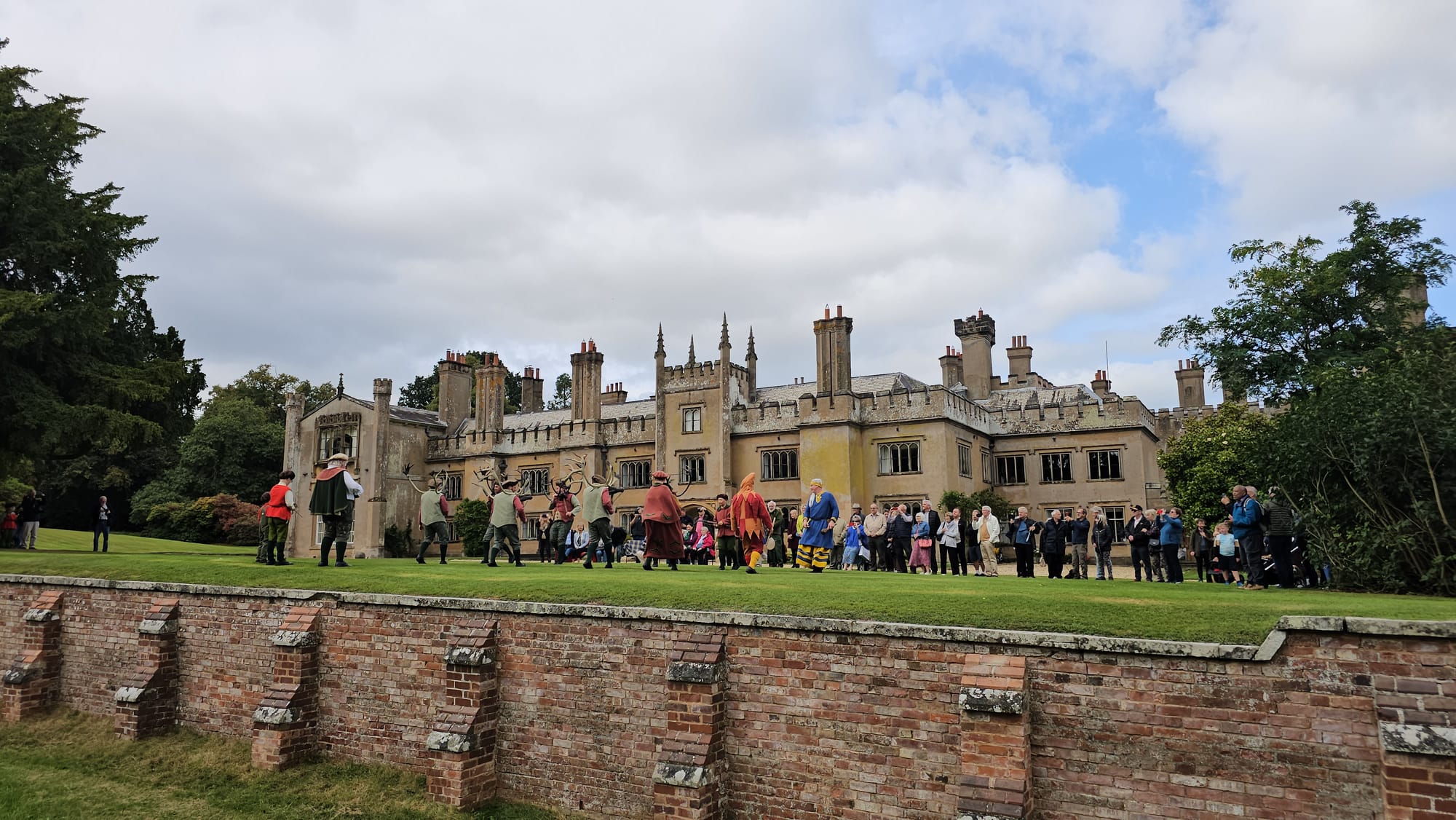
Blithfield Hall and the Bagot Family
One of the key stops on the Horn Dance route is Blithfield Hall, a grand Grade I listed country house located just outside Abbots Bromley. Blithfield Hall has been the home of the Bagot family since the late 14th century, and the family has a long-standing connection to the Horn Dance and the local community.
The Bagots, one of the oldest and most respected families in Staffordshire, have been instrumental in preserving the region’s traditions, including the Horn Dance. The family’s heraldic crest, featuring a goat, symbolises their deep ties to the local area. Legend has it that Sir John Bagot brought the rare Bagot goat to Britain from the Crusades in the 14th century. These distinctive black and white goats, now one of Britain’s oldest identifiable breeds, became closely associated with the Bagot family and remain a symbol of the estate to this day.
During the Horn Dance, the dancers visit Blithfield Hall to perform for the family and their guests. The stop at the hall is not only a highlight of the day’s festivities but also serves as a reminder of the historical and cultural ties between the Bagot family and the village of Abbots Bromley.
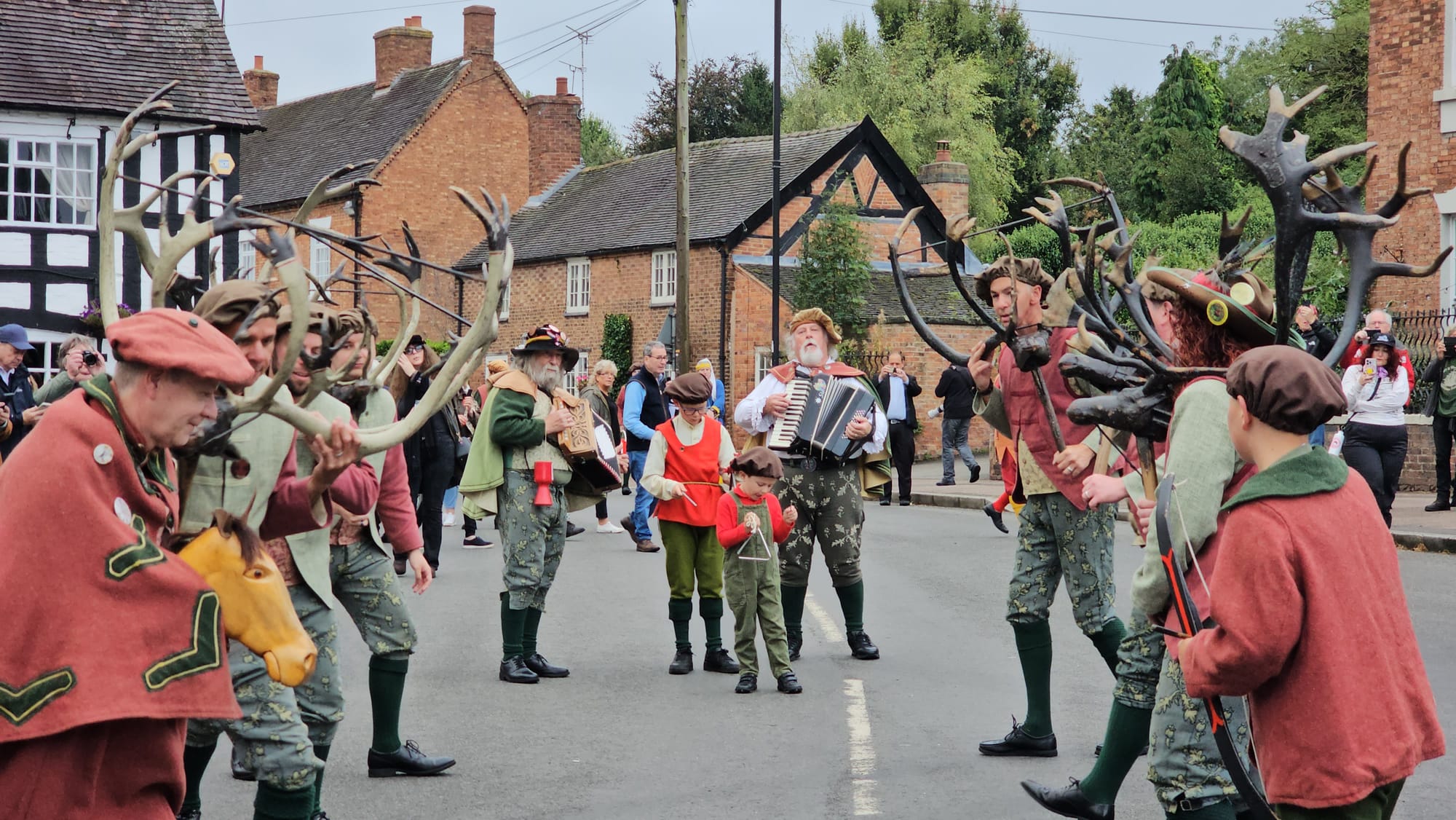
The Roles and Costumes in the Dance
The Abbots Bromley Horn Dance features a range of characters, each with a symbolic role in the performance. The six deer-men, who carry the reindeer antlers, are the central figures, representing strength and fertility. They are accompanied by several other key characters, including the Fool, Maid Marian, the Hobby Horse, and the Bowman.
The Fool, often portrayed as a mischievous figure, carries a stick with a bladder attached and playfully strikes onlookers during the dance. Maid Marian, traditionally played by a man dressed in women’s clothing, originally carried a cup and stick, which were banged together as part of a fertility ritual. Though this element has been lost in modern performances, Maid Marian remains an important part of the procession.
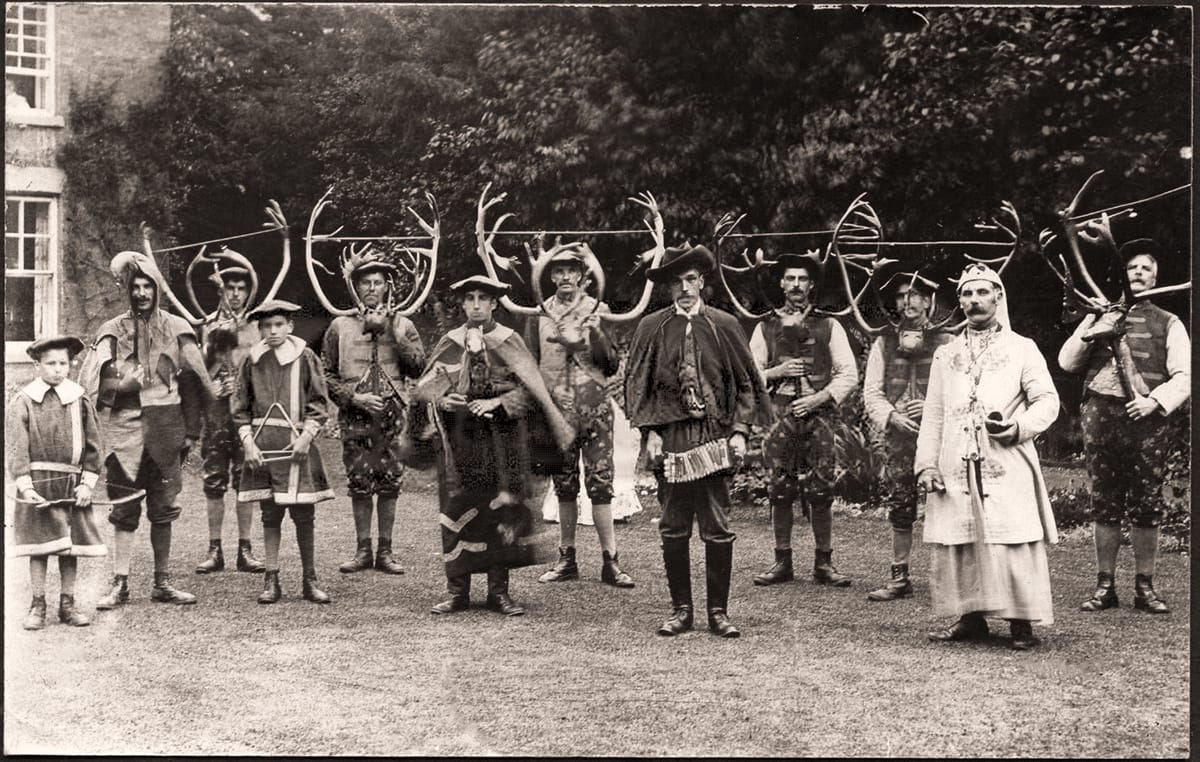
The Hobby Horse, once a central figure in the dance, represents the link to earlier hobby horse traditions that were widespread in medieval England. The Bowman, who now carries a bow and arrow, represents Robin Hood and was likely a later addition to the dance.
The costumes worn by the performers were redesigned in the 19th century by the local vicar’s wife. The dancers now wear Tudor-style outfits, complete with caps, knee-breeches, and jackets adorned with oak leaf patterns. The Fool wears a jester’s motley, adding a splash of colour and humour to the proceedings.
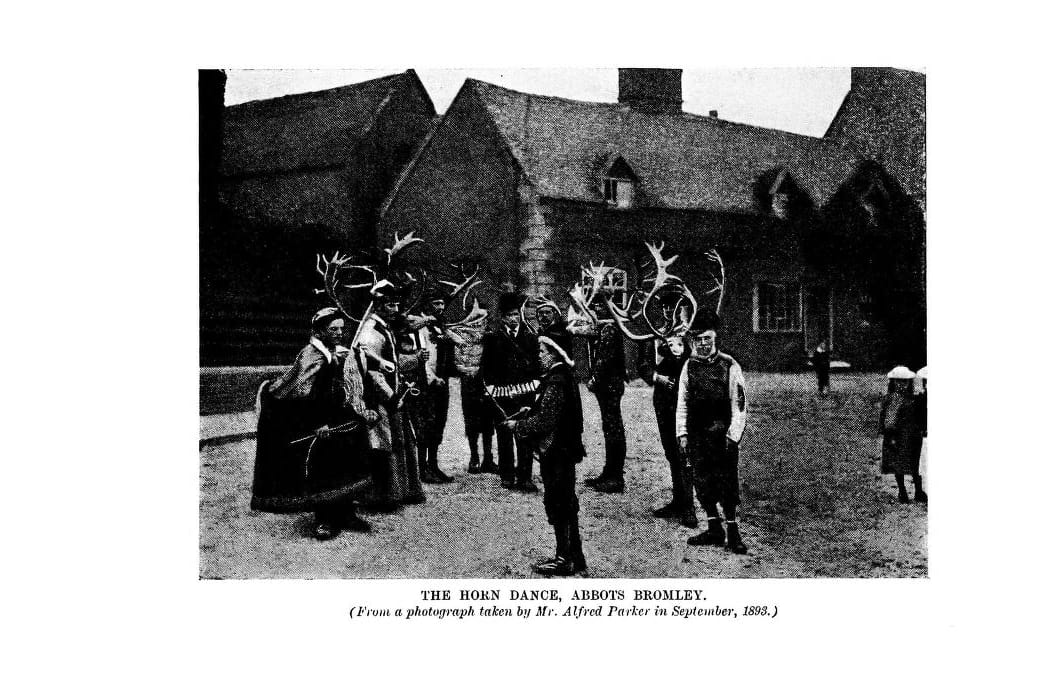
Preservation Through Time: Wartime Resilience and Cultural Impact
One of the most remarkable aspects of the Abbots Bromley Horn Dance is its resilience. Even during times of war and political upheaval, the tradition has been preserved. During World War I, three soldiers were released from their duties on the front lines to return to Abbots Bromley and perform the dance, ensuring that the custom would continue. This act of dedication was commemorated in 2014, during the 100th anniversary of the war, when three dancers wore World War I uniforms in honour of the soldiers who kept the tradition alive.
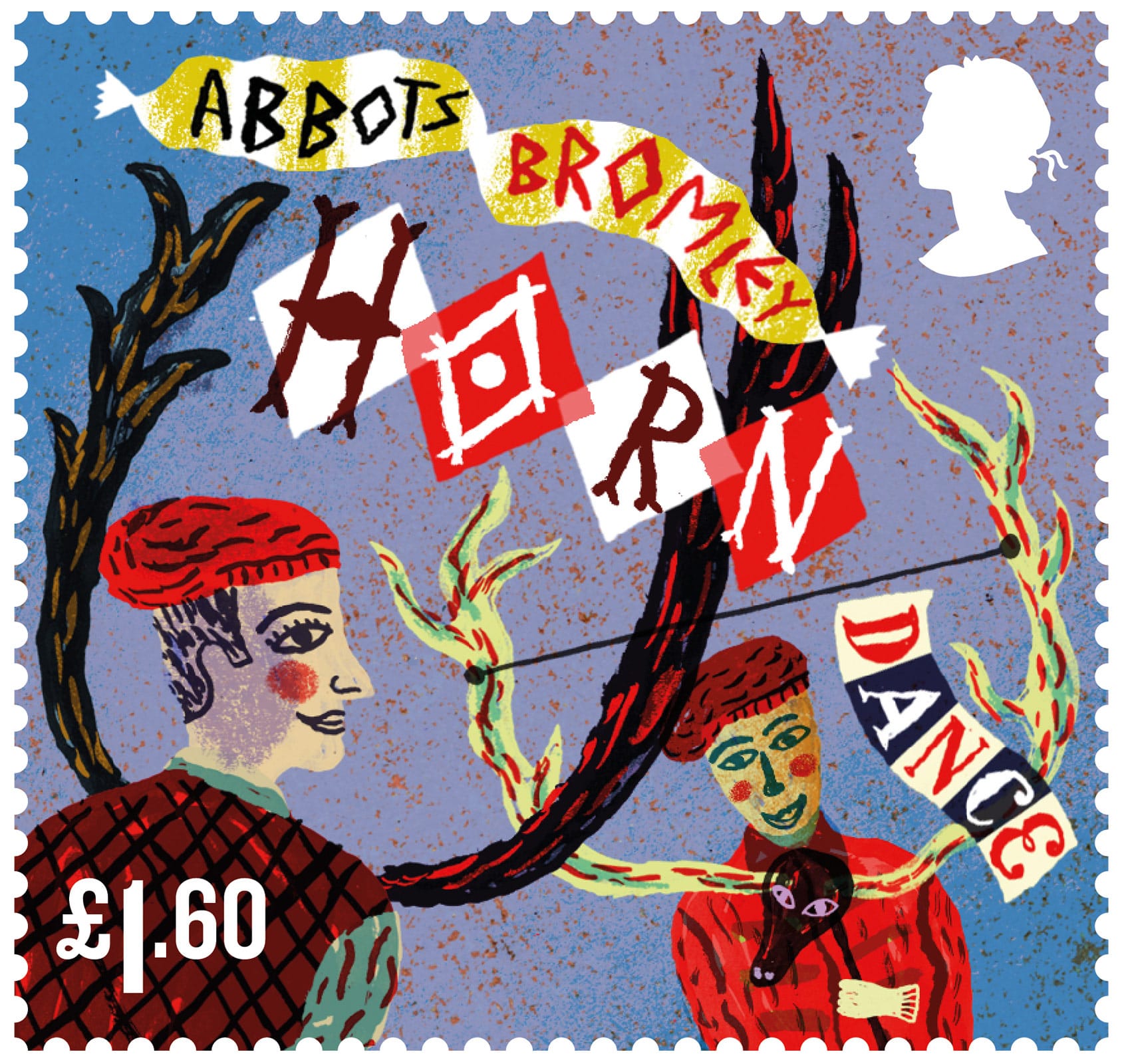
In recent years, the Abbots Bromley Horn Dance has gained recognition beyond Staffordshire. Folk revival movements in the 1940s, such as the performances by the Thaxted Morris Men, introduced versions of the dance to new audiences. The dance has also been commemorated in art, including Ivon Hitchens’ mural at Cecil Sharp House, which celebrates English folk traditions. In 2019, the Royal Mail issued a special set of stamps featuring the Horn Dance, further cementing its status as one of Britain’s most unusual and enduring customs.
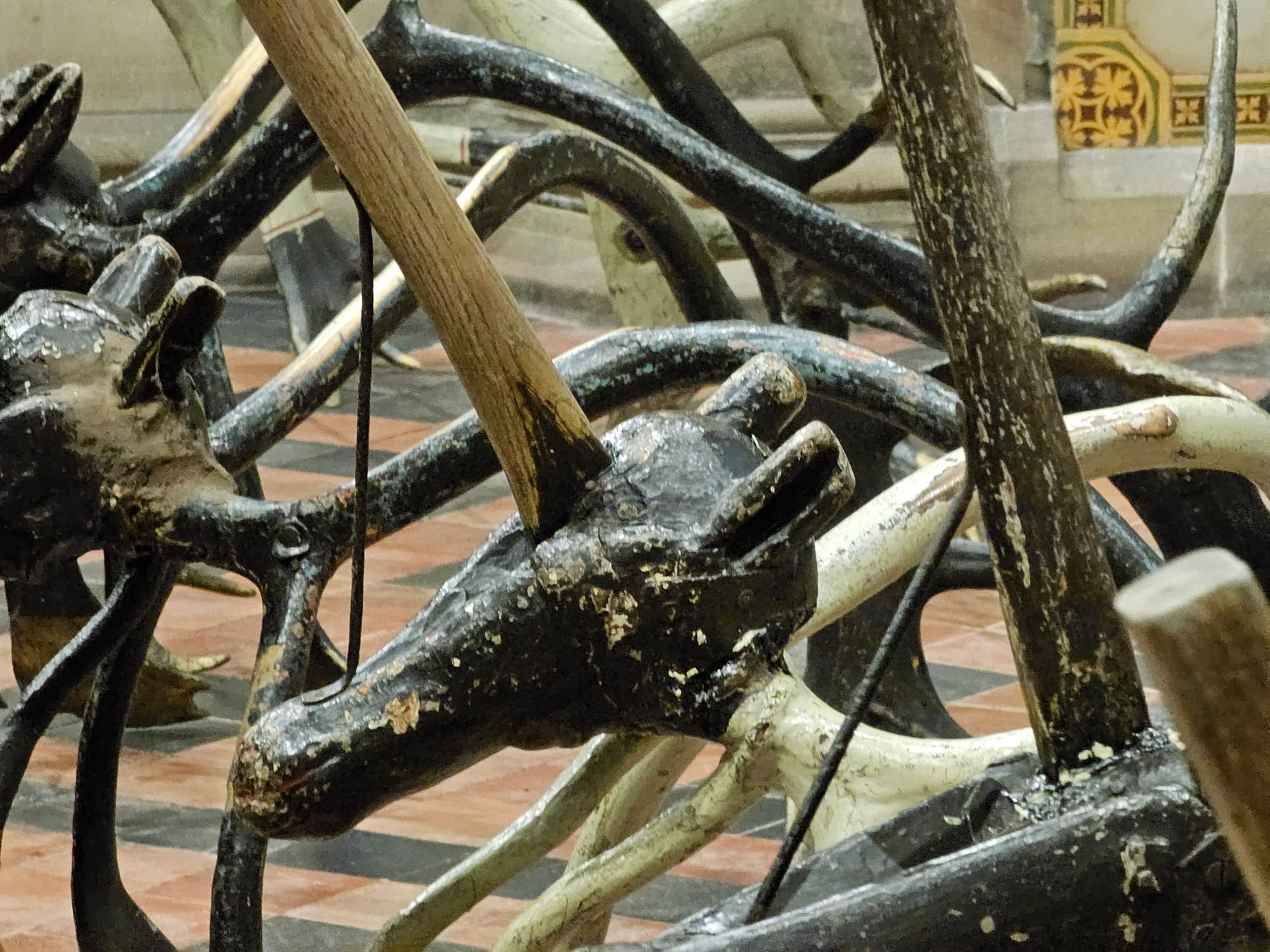
The Abbots Bromley Horn Dance is more than just a folk tradition—it is a living link to England’s ancient past, a testament to the power of community, and a symbol of the resilience of rural customs. Whether its origins lie in pagan fertility rites, medieval hunting celebrations, or a combination of both, the dance has captivated participants and spectators for over 800 years. Its continued celebration, reinforced by the involvement of historical estates like Blithfield Hall and families such as the Bagots, serves as a reminder of the enduring power of tradition and the importance of preserving cultural heritage.
Through its ritualised movements, its ancient reindeer horns, and its colourful cast of characters, the Abbots Bromley Horn Dance offers a window into a bygone era, while remaining a vital part of the present-day life of the village and the wider Staffordshire community. The dance stands as a timeless symbol of England’s rich folk landscape and the enduring power of its traditions.
If you like what you have read, please feel free to support me by following and signing up for my newsletter and/or buying me a coffee!
Thank you.
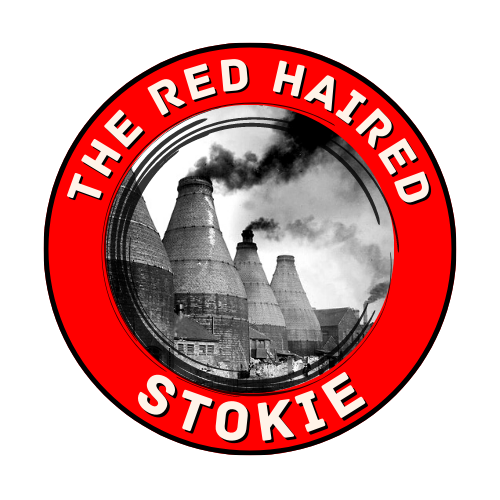
Check out my online shop for my local photography and art
Check out my recommended reading list
